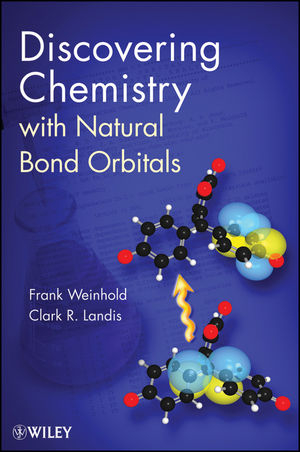
Discovering Chemistry With Natural Bond Orbitals
John Wiley & Sons Inc (Verlag)
978-1-118-11996-9 (ISBN)
FRANK WEINHOLD, PhD, is Emeritus Professor of Physical and Theoretical Chemistry at the University of WisconsinMadison. Professor Weinhold has served on the editorial advisory boards of the International Journal of Quantum Chemistry and Russian Journal of Physical Chemistry. He is the author of more than 170 technical publications and software packages, including the natural bond orbital program. CLARK R. LANDIS, PhD, is Professor of Inorganic Chemistry at the University of WisconsinMadison. He has received teaching and lectureship awards for his contributions to chemical education. Dr. Landis's research focuses on catalysis in transition metal complexes.
Preface xi 1 Getting Started 1
1.1 Talking to your electronic structure system 1
1.2 Helpful tools 3
1.3 General $NBO keylist usage 4
1.4 Producing orbital imagery 6
Problems and exercises 8
2 Electrons in Atoms 10
2.1 Finding the electrons in atomic wavefunctions 10
2.2 Atomic orbitals and their graphical representation 13
2.3 Atomic electron configurations 18
2.4 How to find electronic orbitals and configurations in NBO output 23
2.5 Natural atomic orbitals and the natural minimal basis 29
Problems and exercises 31
3 Atoms in Molecules 34
3.1 Atomic orbitals in molecules 35
3.2 Atomic configurations and atomic charges in molecules 39
3.3 Atoms in open-shell molecules 44
Problems and exercises 49
4 Hybrids and Bonds in Molecules 51
4.1 Bonds and lone pairs in molecules 52
4.2 Atomic hybrids and bonding geometry 60
4.3 Bond polarity, electronegativity, and Bent’s rule 71
4.4 Hypovalent three-center bonds 78
4.5 Open-shell Lewis structures and spin hybrids 82
4.6 Lewis-like structures in transition metal bonding 86
Problems and exercises 89
5 Resonance Delocalization Corrections 92
5.1 The natural Lewis structure perturbative model 93
5.2 Second-order perturbative analysis of donor–acceptor interactions 96
5.3 $Del energetic analysis [integrated ESS/NBO only] 105
5.4 Delocalization tails of natural localized molecular orbitals 113
5.5 How to $CHOOSE alternative Lewis structures 117
5.6 Natural resonance theory 123
Problems and exercises 133
6 Steric and Electrostatic Effects 135
6.1 Nature and evaluation of steric interactions 136
6.2 Electrostatic and dipolar analysis 145
Problems and exercises 153
7 Nuclear and Electronic Spin Effects 155
7.1 NMR chemical shielding analysis 156
7.2 NMR J-coupling analysis 162
7.3 ESR spin density distribution 168
Problems and exercises 173
8 Coordination and Hyperbonding 176
8.1 Lewis acid–base complexes 178
8.2 Transition metal coordinate bonding 193
8.3 Three-center, four-electron hyperbonding 204
Problems and exercises 206
9 Intermolecular Interactions 209
9.1 Hydrogen-bonded complexes 210
9.2 Other donor–acceptor complexes 217
9.3 Natural energy decomposition analysis 223
Problems and exercises 227
10 Transition State Species and Chemical Reactions 231
10.1 Ambivalent Lewis structures: the transition-state limit 232
10.2 Example: bimolecular formation of formaldehyde 236
10.3 Example: unimolecular isomerization of formaldehyde 243
10.4 Example: SN2 halide exchange reaction 246
Problems and exercises 249
11 Excited State Chemistry 252
11.1 Getting to the “root” of the problem 252
11.2 Illustrative applications to NO excitations 256
11.3 Finding common ground: NBO versus MO state-to-state transferability 269
11.4 NBO/NRT description of excited-state structure and reactivity 277
11.5 Conical intersections and intersystem crossings 282
Problems and exercises 289
Appendix A: What’s Under the Hood? 297
Appendix B: Orbital Graphics: The NBOView Orbital Plotter 300
Appendix C: Digging at the Details 302
Appendix D: What If Something Goes Wrong? 304
Appendix E: Atomic Units (a.u.) and Conversion Factors 307
Index 309
| Verlagsort | New York |
|---|---|
| Sprache | englisch |
| Maße | 158 x 236 mm |
| Gewicht | 517 g |
| Themenwelt | Naturwissenschaften ► Chemie ► Physikalische Chemie |
| ISBN-10 | 1-118-11996-7 / 1118119967 |
| ISBN-13 | 978-1-118-11996-9 / 9781118119969 |
| Zustand | Neuware |
| Haben Sie eine Frage zum Produkt? |
aus dem Bereich


